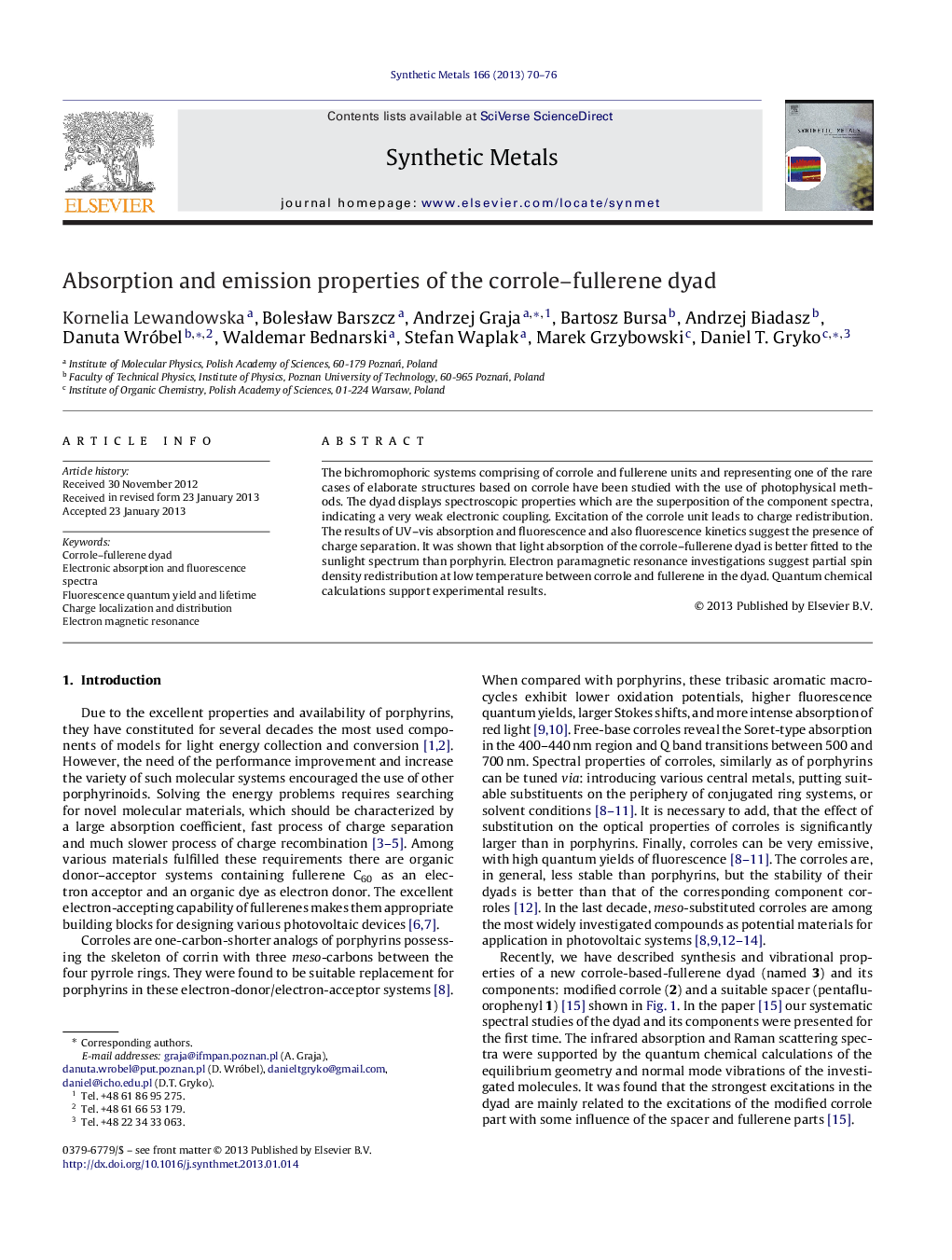| Article ID | Journal | Published Year | Pages | File Type |
|---|---|---|---|---|
| 1441455 | Synthetic Metals | 2013 | 7 Pages |
The bichromophoric systems comprising of corrole and fullerene units and representing one of the rare cases of elaborate structures based on corrole have been studied with the use of photophysical methods. The dyad displays spectroscopic properties which are the superposition of the component spectra, indicating a very weak electronic coupling. Excitation of the corrole unit leads to charge redistribution. The results of UV–vis absorption and fluorescence and also fluorescence kinetics suggest the presence of charge separation. It was shown that light absorption of the corrole–fullerene dyad is better fitted to the sunlight spectrum than porphyrin. Electron paramagnetic resonance investigations suggest partial spin density redistribution at low temperature between corrole and fullerene in the dyad. Quantum chemical calculations support experimental results.
Graphical abstractFigure optionsDownload full-size imageDownload as PowerPoint slideHighlights► Extended spectroscopic and quantum chemical investigations of a new corrole–fullerene dyad. ► Photoinduced electron transfer and charge localization in the corrole–fullerene dyad. ► First studies of UV–vis absorption, fluorescence, fluorescence kinetics and EPR spectra. ► Corrole–fullerene dyad perfectly fitted to the sunlight and suitable for light conversion.
